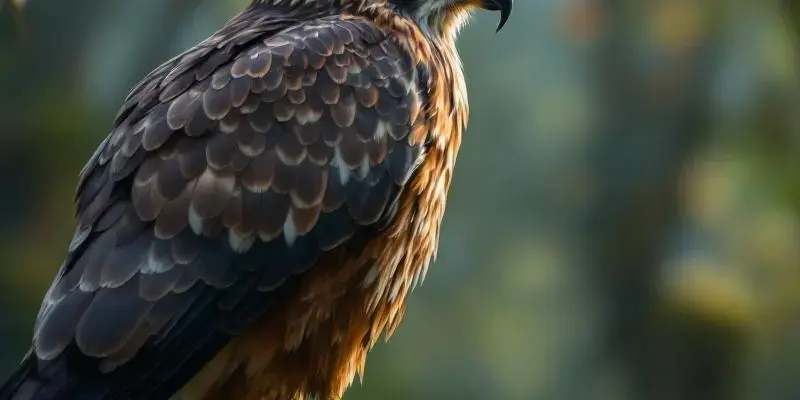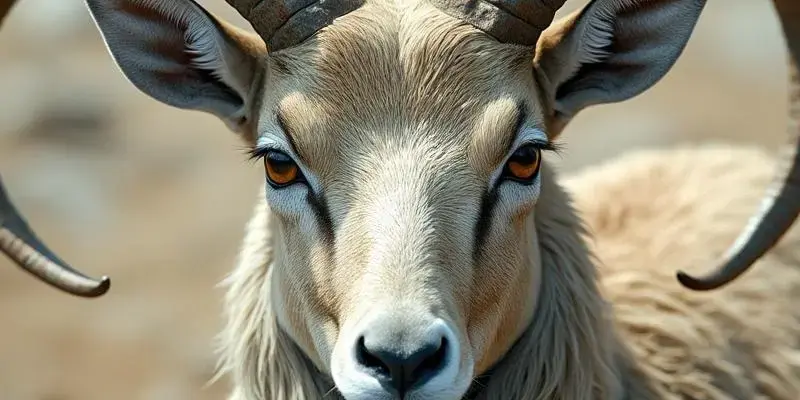Magpie spiritual meaning

Magpies hold profound spiritual significance as messengers between physical and spiritual realms, embodying the duality of existence through their striking black and white appearance. These intelligent birds carry diverse symbolic meanings across cultures—viewed as harbingers of good fortune in Eastern traditions while inspiring more complex interpretations in Western mythology and folklore.
Key Takeaways
- Magpies represent intelligence and transformation across various spiritual traditions
- Their black and white plumage symbolizes balance between opposing forces in the universe
- Eastern cultures generally view magpies as bringers of good fortune, while Western interpretations are more mixed
- Scientific studies confirm magpies’ exceptional cognitive abilities, supporting their spiritual significance as wise messengers
- Magpie symbolism teaches lessons about authentic self-expression and finding balance in life
Introduction to Magpie Symbolism
Magpies stand as powerful spiritual symbols across numerous cultures and traditions. Their distinctive appearance and remarkable intelligence have earned them significant roles in mythology, folklore, and spiritual practices worldwide. The striking black and white plumage of these birds visually represents the balance between worlds—light and dark, physical and spiritual, conscious and subconscious.
What makes magpies particularly fascinating is how differently they’re perceived across cultures. In Eastern traditions, magpies typically represent joy, good fortune, and positive transformation. Meanwhile, Western interpretations offer a more complex view, ranging from bad omens to clever tricksters. These contrasting beliefs highlight the magpie’s role as a boundary-crossing messenger, capable of traveling between realms and carrying profound spiritual significance.
Eastern vs. Western Cultural Interpretations
The spiritual meaning of magpies varies dramatically between Eastern and Western cultural perspectives. In Chinese culture, magpies have been revered for centuries as symbols of happiness, good fortune, and luck. During the Manchu dynasty (17th-20th centuries), magpies even served as imperial symbols. Similarly, in South Korea, where the magpie is the national bird, they’re traditionally seen as harbingers of visitors bringing good news.
Western interpretations present a stark contrast. European Christian traditions often viewed magpies with suspicion—some folklore claims it was the bird that didn’t mourn Jesus at the crucifixion, leading to its association with bad luck. However, pre-Christian Roman and Greek societies held more positive views, associating magpies with cleverness and considering them sacred to Bacchus, the god of wine and ecstasy.
This cultural comparison reveals how the same creature can inspire radically different spiritual interpretations based on cultural context:
- Chinese: Symbol of joy, marriage, and good fortune
- Korean: Bringer of good news and positive visitors
- European Christian: Often associated with bad omens and witchcraft
- Pre-Christian European: Respected for intelligence and divine connection
- Native American: Messenger of the Creator and keeper of sacred knowledge
Scientific Intelligence Supporting Spiritual Significance
Modern science has validated what many ancient cultures intuitively recognized—magpies possess exceptional cognitive abilities. Their brain-to-body ratio compares favorably with great apes, placing them among the most intelligent non-human animals. This scientific understanding adds depth to their spiritual significance as wise messengers and knowledge-keepers.
Magpies demonstrate remarkable problem-solving skills, use tools, and cooperate in teams, behaviors once thought unique to primates. They’re also among the few animals that can recognize themselves in mirrors, indicating self-awareness. Their ability to mimic human speech further connects to their spiritual association with communication and voice—themes that appear consistently across mythological traditions.
What’s particularly fascinating is how Romans’ admiration for magpie intelligence now finds support in contemporary scientific research. This connection between ancient spiritual wisdom and modern scientific discovery suggests that intuitive understanding of animal consciousness often precedes formal scientific validation.
The Spiritual Meaning of Duality
The magpie’s distinctive black-and-white plumage serves as a natural symbol for duality—the coexistence of opposites that creates wholeness. This visual representation of contrast mirrors fundamental spiritual principles found across traditions: light and shadow, physical and spiritual, masculine and feminine energies.
In Norse mythology, magpies connect to the concept of the union of Sacred Feminine and Masculine principles. They’re associated with Skadi, Priestess of the Magpie Clan, who embodied both strength and nurturing qualities. As mediators between physical and ethereal planes, magpies teach the spiritual lesson of reconciling emotional opposites—anger and compassion, grief and joy, life and death.
The magpie’s ability to thrive in diverse environments further reinforces this symbolism of adaptability and integration. They remind us that apparent contradictions can coexist harmoniously, offering a path toward wholeness rather than fragmentation. This spiritual teaching encourages embracing all aspects of existence rather than rejecting what seems contradictory.
Magpie Numerology and Fortune-Telling
Across European folklore, the number of magpies spotted at once carries significant predictive meaning. The traditional English counting rhyme captures this numeric divination system: “One for sorrow, Two for joy, Three for a girl, Four for a boy…” These verses continue with different outcomes based on the count, reflecting how deeply magpies were integrated into folk fortune-telling practices.
German traditions offer their own interpretation system, where one magpie signals bad luck, two represent joy and marriage, three foretell a journey, four bring good news, and five predict a visit to a grand house. Meanwhile, Celtic beliefs considered four birds a particularly positive omen, while a solitary magpie required respectful acknowledgment to avoid misfortune.
Dream interpretations featuring magpies similarly depend on numeric significance. A single dream magpie might warn of deception, while pairs symbolize partnership or upcoming celebrations. These numeric traditions demonstrate how magpie symbolism became interwoven with predictive practices, creating rich systems for interpreting life’s uncertainties.
Shamanic Powers and Spiritual Connections
In shamanic traditions worldwide, magpies are recognized as gateway openers to spirit and otherworldly realms. Their ability to seemingly travel between worlds makes them natural allies for those working with spiritual energies and seeking divine guidance. Various Native American traditions honor the magpie’s special role—Cheyenne tribes view them as the Creator’s Messenger, while Hopi traditions associate them with guarding the Eastern Quarter of Creation.
The magpie’s connection to occult knowledge and divination appears consistently across cultures. In Scandinavian traditions, they’re linked to the Hulder forest spirits, emphasizing their role as intermediaries between humans and nature spirits. This cross-cultural recognition of magpies’ spiritual significance suggests their universal connection to unseen dimensions.
Traditional wisdom cautions that working with magpie energy requires respect for their unpredictable nature. Their medicine can bring profound insights but may arrive in unexpected forms. This unpredictability itself carries spiritual teaching—true wisdom often comes through surprising channels and requires openness to the unexpected.
Material Collections and Spiritual Teachings
The “thieving magpie” reputation, immortalized in Rossini’s opera “La Gazza Ladra,” highlights another dimension of magpie symbolism—their natural attraction to collecting shiny objects. On a spiritual level, this behavior presents a powerful metaphor for our relationship with material possessions and what we value.
This collection instinct contains paradoxical spiritual teachings. On one hand, it warns against material obsession hindering spiritual growth—the danger of becoming too attached to physical things at the expense of inner development. Yet simultaneously, it celebrates finding joy in simple treasures and recognizing daily blessings.
Magpies teach a balanced perspective on prosperity and materialism. They collect what attracts them but aren’t defined by their collections. This middle path offers wisdom for navigating our own relationship with possessions—appreciating beauty and abundance without becoming enslaved to acquisition. The magpie reminds us that true value lies not in hoarding but in recognizing what genuinely brings joy.
Risk-Taking and Personal Transformation
Those who connect with magpie energy often demonstrate exceptional courage and a willingness to engage in front-line endeavors. Magpies are known for their bold behavior, sometimes even teasing larger predators—a natural trait that translates spiritually into taking calculated risks for growth and transformation.
This aspect of magpie symbolism teaches defending one’s right to take chances despite opposition or criticism. Their energy supports personal transformation through strategic risk-taking and public vulnerability. When a magpie appears in your life, it may signal new beginnings and opportunities that require stepping beyond your comfort zone.
The transformative power of magpie energy comes from its combination of intelligence with boldness. Unlike reckless risk-taking, the magpie represents strategic courage—knowing when to advance, when to retreat, and how to use wit rather than force. This balanced approach to challenges offers valuable guidance for personal growth journeys.
Voice, Communication, and Self-Expression
A biblical story tells of a chattering magpie perched on Noah’s Ark ridgepole, symbolizing the spiritual importance of voice and authentic expression. This theme of finding and using one’s true voice resonates throughout magpie symbolism across cultures. Their natural vocal capabilities—from harsh calls to complex mimicry—reflect the multifaceted nature of human communication.
Native American traditions present contrasting views of the magpie’s voice, sometimes as a warning messenger and other times as a cautionary tale about gossip. This duality highlights the power of words—they can either heal or harm, depending on how they’re used. Dream imagery of singing magpies often interprets as a spiritual call to discover your personal sacred song—your authentic form of self-expression.
The magpie embodies the rebel archetype who refuses to be silenced despite social pressures. Their persistence in communication, sometimes viewed as noisy or disruptive, carries the spiritual teaching that authentic expression matters, even when it doesn’t conform to others’ expectations. When magpie energy enters your life, it often signals a time to speak your truth, even if that truth challenges existing structures.
Protection and Grounding Symbolism
Despite their airborne nature, magpies spend significant time on the ground, connecting them spiritually with themes of security, protection, and earthly belonging. Their territorial behaviors and strong nesting instincts reflect spiritual concerns about home, safety, and material security. Scandinavian folklore considers nesting magpies near homes particularly lucky, bringing protection to the household.
Magpie energy offers techniques for centering when feeling off-balance or ungrounded. Their ability to move between ground and sky represents the ideal spiritual state—connected to earthly reality while maintaining access to higher perspectives. This grounding symbolism proves especially valuable during times of change or uncertainty.
The valiant and fearless nature of magpies during personal challenges provides a model for protective energy. Unlike passive forms of protection that
The article explores magpies’ spiritual significance across cultures, highlighting their role as messengers between physical and spiritual realms. These intelligent birds symbolize duality through their black and white appearance, representing balance between opposing forces. Eastern traditions generally view magpies as bringers of good fortune, while Western interpretations are more complex, ranging from omens to tricksters.
Modern science confirms magpies’ exceptional cognitive abilities, supporting their spiritual significance as wise messengers. Their symbolism teaches lessons about authentic self-expression, finding balance, and navigating life’s contradictions. Magpies also represent transformation, risk-taking, and the courage to speak one’s truth despite opposition.
| Key Aspect | Spiritual Significance |
|---|---|
| Appearance | Black and white plumage represents duality and balance between worlds |
| Cultural Views | Good fortune (East) vs. complex interpretations (West) |
| Intelligence | Exceptional cognitive abilities support role as wise messengers |
| Symbolism | Communication, transformation, authentic self-expression |
| Spiritual Lessons | Finding balance, embracing opposites, strategic risk-taking |













